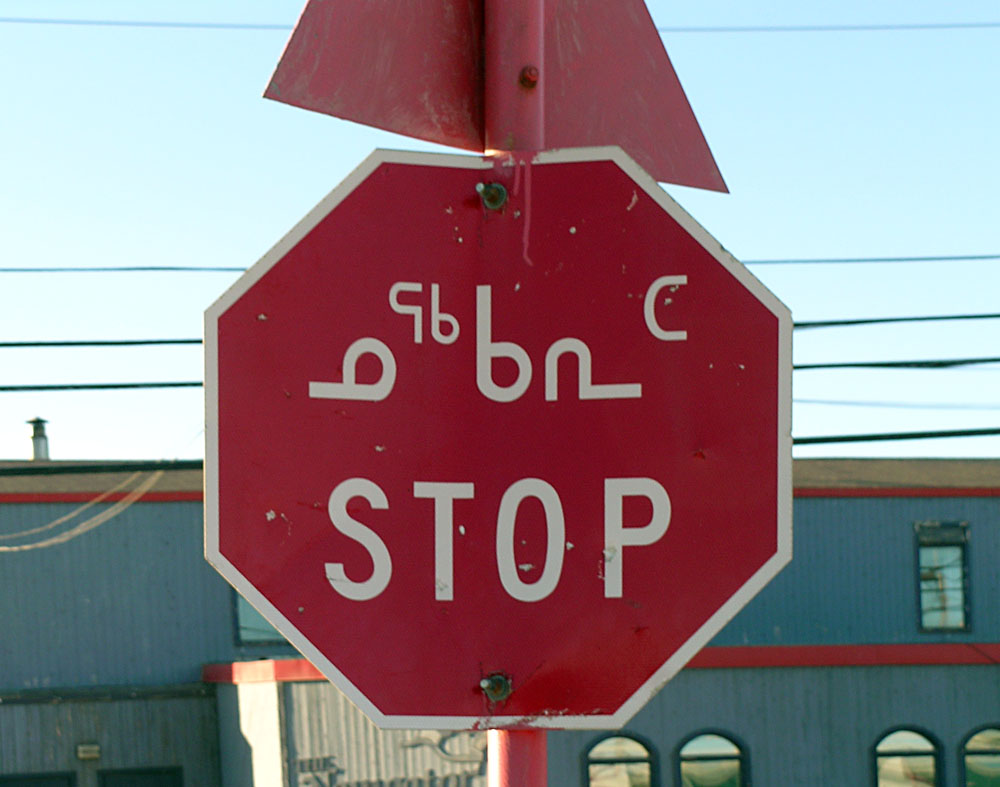
By Monique Conrod
Canada’s Inuit have officially adopted a new way of writing their language.
A new writing system, called Inuktut Qaliujaaqpait, will make it easier for people from different groups and regions to communicate with each other.
About 47,000 Inuit live in Canada’s north, in communities spread out from the Northwest Territories to Labrador. Most speak a language known as Inuktut.
Inuktut has five dialects (a dialect is a version of a language that is spoken only in a particular region or by a particular group of people). It also has nine different writing systems.
People who speak different dialects of Inuktut can usually understand each other, but they often cannot read each other’s written language.
Up until the 1700s, Inuktut was only a spoken language. When other people started arriving from Europe, they invented their own systems for writing the Inuktut language. People from different groups or regions ended up using different writing systems.
Some of these writing systems use the roman alphabet (A, B, C, etc.). Others use syllabics – symbols such as circles, squares or triangles that represent the sound of a whole syllable. Both systems also use accents and other marks to show changes in pronunciation or meaning.
Using so many different systems can cause problems. It can be hard for people from different groups or regions to communicate in writing.
It’s more expensive to translate books or government documents because so many different versions are needed. That means students don’t always have textbooks or library books in their own language.
The old writing systems also make it difficult to text or to use a computer keyboard. Special software is needed and adding accents on a phone or keyboard is slow and awkward. As a result, many Inuit – especially young people – now prefer to use English instead.
Inuit Tapiriit Kanatami (ITK) is an organization that represents Inuit in Canada. In 2011, ITK set out to create a single writing system that could be used to represent every Inuktut dialect.
A group of Inuktut language experts spent eight years talking to elders, teachers and people from various communities about their written and spoken languages.
Finally, on September 26, ITK announced that it has adopted Inuktut Qaliujaaqpait as the standard system for writing in Inuktut.
The new system is designed to be easy to learn and easy to use. It uses the Roman alphabet to represent every sound from all five dialects.
Inuktut Qaliujaaqpait will be used for all government documents and other publications that are distributed nationally.
It will also be used to create new textbooks and other materials for schools, so all Inuit children will receive high quality education in their own language.
ITK expects it will be a long time before everyone adopts the new system. But Crystal Martin-Lapenskie, president of the National Inuit Youth Council, says Inuktut Qaliujaaqpait will “revitalize and strengthen our Inuktut language for future generations to come.”
THINK AND DISCUSS
1. There are pros and cons (good things and bad things) about having a new written language. Before the adoption of Inuktut Qaliujaaqpait, many people could not communicate with each other as easily. However, some people will have to learn a new way of writing. What other pros and cons can you think of?
2. What is orthography?
LINKS
The ITK website has a great article about the adoption of Inuktut Qaliujaaqpait; the article is also written in syllabics.
Article about the new language, in Nunatsiaq News, (published in Nunavut and the Nunavik territory of Quebec).
https://nunatsiaq.com/stories/article/inuit-qaliujaaqpait-the-product-of-history-and-determination/
CBC article about the new written language.
https://www.cbc.ca/news/canada/north/itk-inuktitut-new-script-1.5311136
Interesting CBC article about “inuktut” vs “inuktitut” and how the CBC’s use of “inuktut” prompts one of the highest rates of correction calls from readers.
https://www.cbc.ca/news/canada/north/inuktut-prompts-correction-requests-1.5153188







